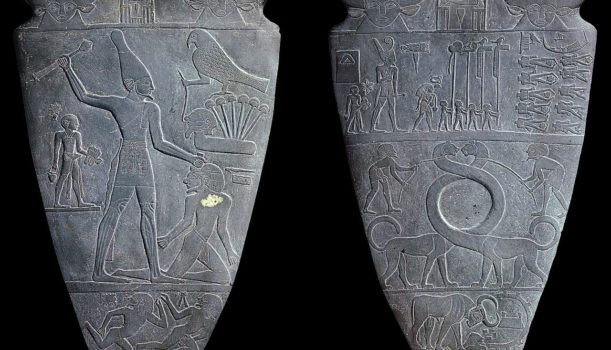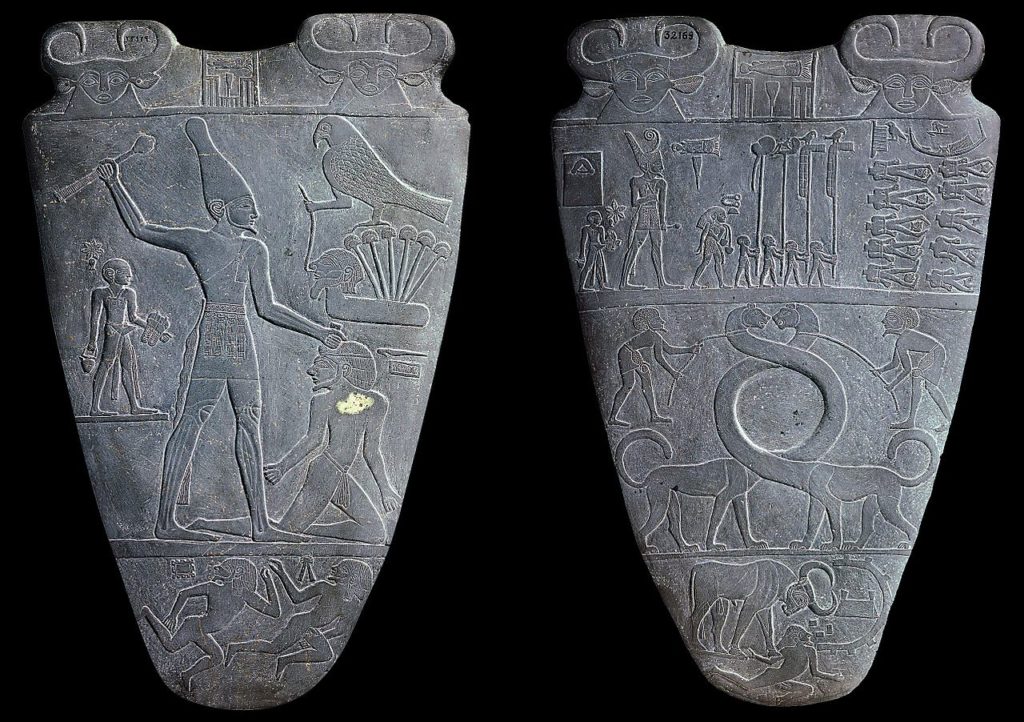The Narmer Palette, sometimes referred to as the first historical document in the world (with some of the earliest Hieroglyphs known), depicts mysterious creatures known as Serpopards. This name for what looks like a leopard with a long serpent neck is a modern term. Although various images of the creature have been found on ancient artifacts, there hasn’t been any ‘official’ name found for it in ancient texts. So is it a Serpopard?
No one can say for certain.
While the entwining long necks may suggest the creature is part serpent, there aren’t any other serpent features to support the idea. Plus, in all known depictions of the creature, it is shown with a more lioness like head. This causes many to question if the long neck on a leopard/lion/cat doesn’t have another symbolic meaning, lost to us today.
The Narmer Palette was discovered in 1897-98 by British archeologists Quibell and Green at the city of Nekhen. It was found in the Temple of Horus and is mostly believed to have been a sacred object used for ritual. The circle formed by the entwining necks of the ‘serpopards’ on the Narmer Palette is where ingredients were ground to apply facial or body cosmetics. It is this area that reveals its main purpose, but yet holds its most mystery. Why are these creatures illustrated this way?
The Egyptian Museum in Cairo currently houses this significant Egyptian artifact. The serpopards are only part of the amazing engraved images on the stone Palette. The palette is thought to show the unification of Lower and Upper Egypt under King Narmer’s rule. He is shown wearing both the Red Crown and White Crown and is victorious in battle.
Standing around 2 feet tall, illustrating incredible historical details, and dating back 5000 years, it is definitely a treasure of the museum!


